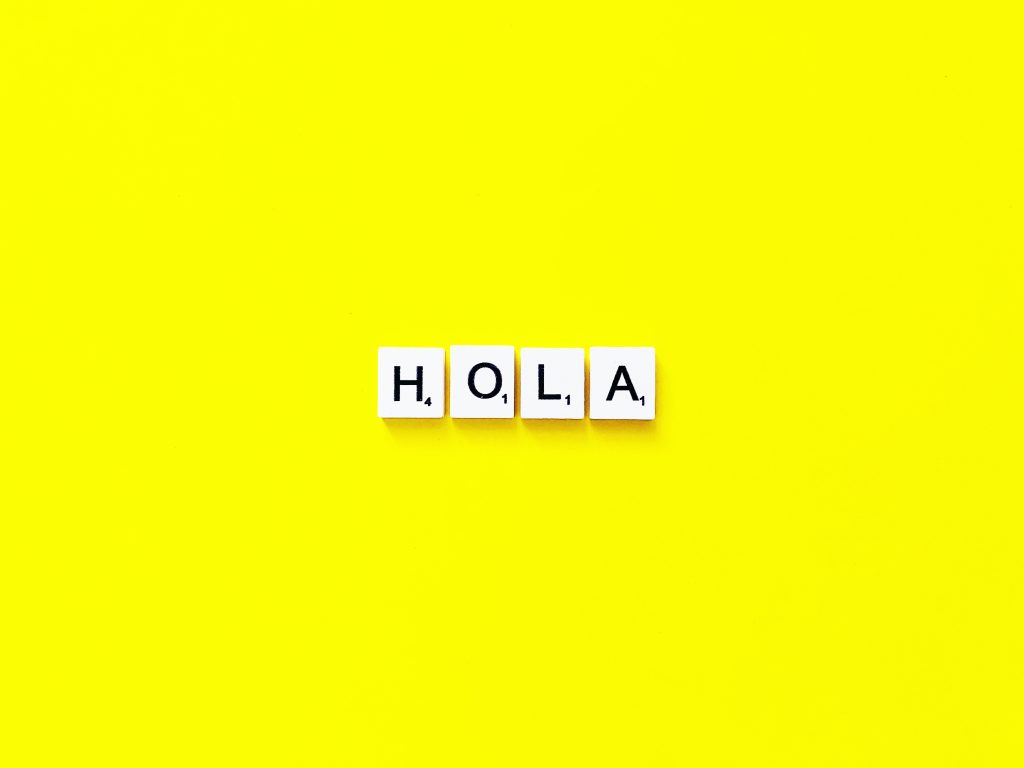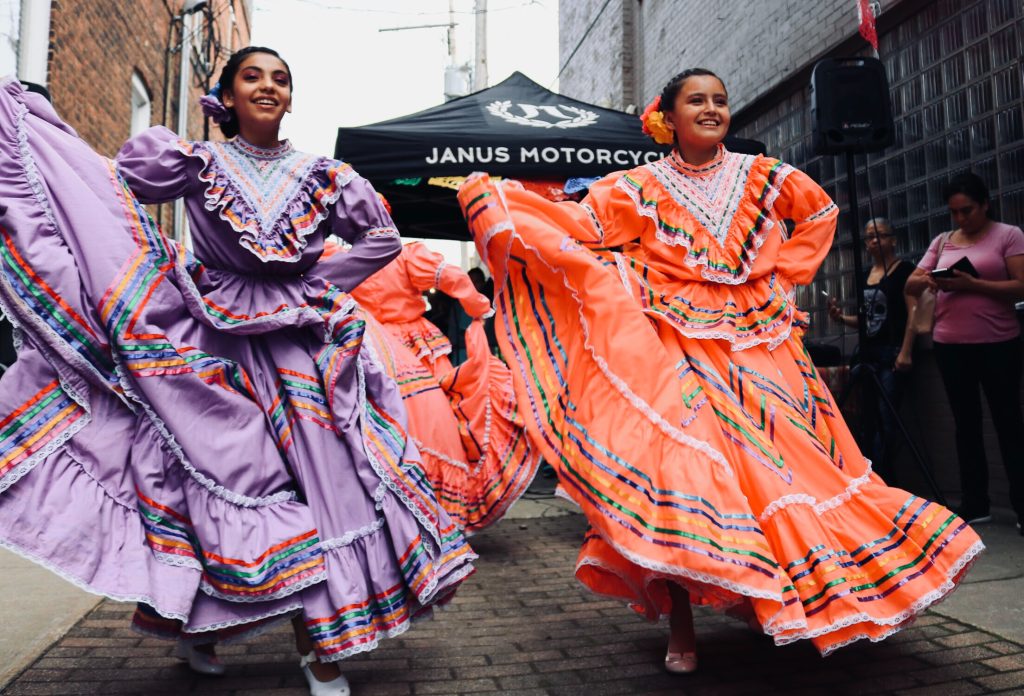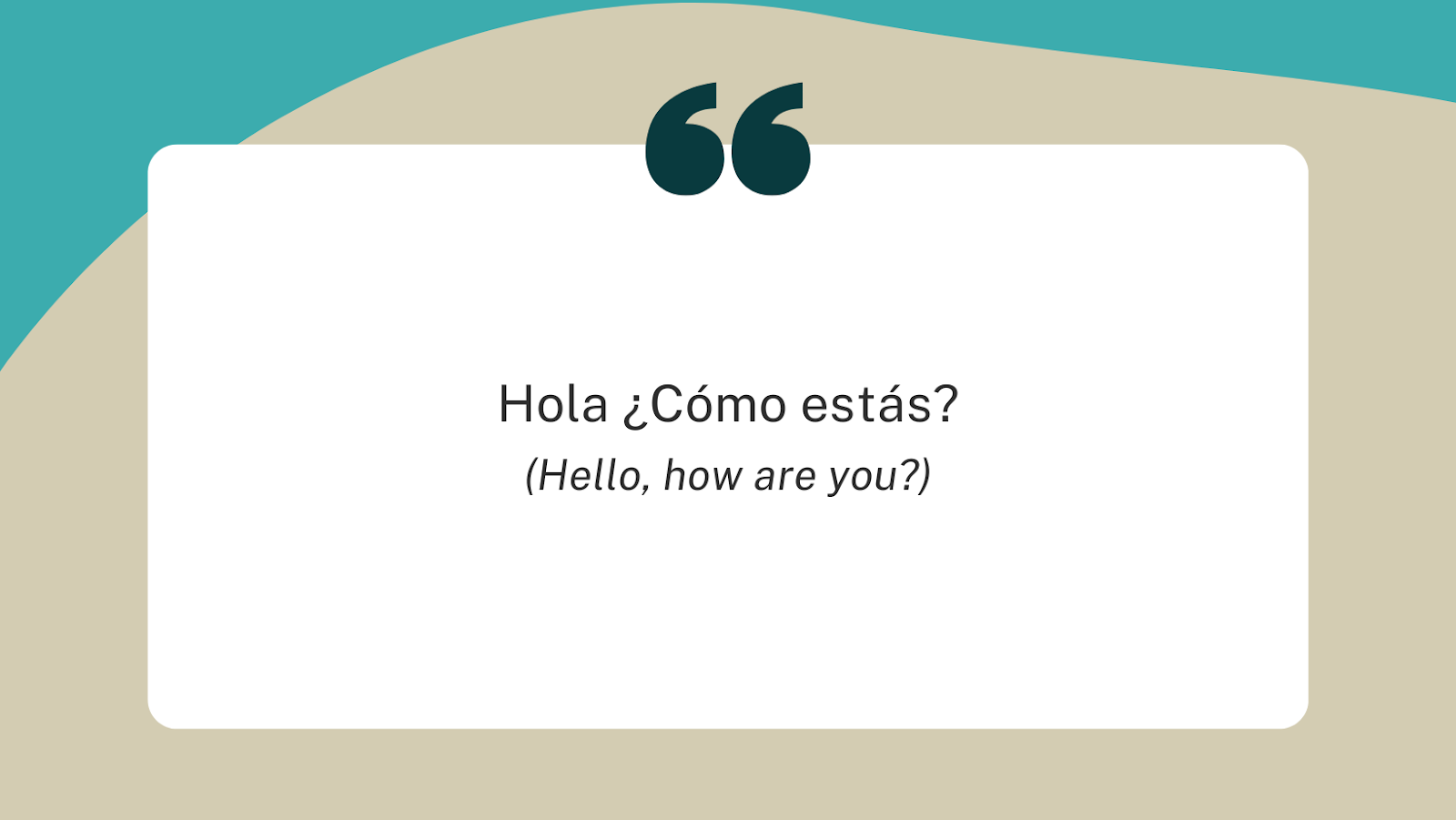
Whether you’re backpacking through Spain or living la vida loca in Latin America, the gateway to connecting with the culture starts with learning common ways of how to say Hi in Spanish.
Sure, you can simply say "Hola" and be understood. But using casual, informal greetings like "¿Qué tal?" or "¿Qué onda?" will have you blending in with locals in no time.
In this comprehensive guide, I’ll walk you through over 25 versatile Spanish greetings - from slang words to formal phrases. You'll learn:
So if you want to sound como un Mexicano authentico or blend in on the streets of Madrid, get ready to spice up your Spanish well beyond "hola." With my help, you'll be greeting amigos like a local in no time! ¡Vámonos!
Let's start with the basics.
"Hi" in Spanish translates to "Hola." It's a warm and friendly greeting that opens doors to communication and connection. It's universal and works in both formal and informal situations.
Hola is a word that can instantly brighten someone's day, no matter where you are in the Spanish-speaking world. But as you learn Spanish, you'll see there are numerous unique ways of greeting someone.

In formal or professional settings, use "Hola" followed by the person's title and last name when greeting someone in Spanish.
For example, say "Hola, Señora Garcia" when meeting someone named Maria Garcia. This shows respect.
This is a standard and polite way to say "Hi" or "Hello" in most formal situations.
It could be accompanied by a handshake and the question ¿Cómo estás? (How are you?).
This means "Good morning" and is appropriate to use in the morning or until around noon.
In Latin American countries it is relevant to say this greeting, otherwise the speaker could sound impolite or even disrespectful.
In some countries it is almost mandatory to use it. So you should say: "Hola, buenos días…"
The literal translation for this expression is "Good afternoon" and is suitable for greeting someone during the afternoon hours.
It is not as important as Buenos días, you can avoid it by just saying Hola. But if you start using it, you will sound like a native speaker.
This means "Good evening" or "Good night" and is used when you greet someone in the evening or night.
It has the same importance than Buenos días, just used in the evening or at night time. Remember to always use it to avoid being perceived as disrespectful.
This is a more general way to say "Greetings" or "Regards" and can be used in formal written correspondence or when addressing a group.
Remember that using the appropriate greeting in Spanish shows respect and politeness, especially in formal contexts. The time of day often determines which greeting is most suitable.

In casual and familiar situations, you can simply use "Hola" followed by the person's first name.
For instance, if you're meeting your friend Carlos, you can say, "Hola, Carlos." It's a relaxed and friendly way to greet someone you know well.
But Spanish is a diverse language, and there are many ways to say "hello" informally, like:
This literally means "How's it going?" or "What's up?" and is a casual way to greet someone informally.
Although it is an informal greeting, it can also be used in a formal context when addressing the interlocutor as 'Usted' (You formal). Then you can say:
Hola, buenos días, ¿Qué tal? (Hello, good morning, how are you?)
This means "How are you?" and is commonly used among friends and acquaintances.
Keep in mind that by using this expression, you are being polite to the other person and they may reply with a short 'Fine, thank you' response, or use a longer response where they tell you how they feel and initiate a more complex conversation.
It is a question that, although it seems advisable, becomes a little more approachable and trustworthy.
This is another common Spanish way to ask "How's it going?" or "How's everything?"
You can also use it in a formal context when you have time to have a longer conversation.
It is also a good way to break the ice with a new acquaintance, without losing respect.
Similar to English, you can use "Hey!" in an informal context to get someone's attention or say "Hi."
Always take care of the tone of this expression, make sure it is friendly and cheerful.
If you use a more serious tone it can mean the opposite, as if you were making a claim.
Remember that the choice of greeting in informal settings can vary based on your relationship with the person and the level of familiarity. Always use a tone that matches the level of informality in your conversation.
In a professional setting, like a business meeting or interview, it's essential to maintain a polite tone.
Use "Buenos días" (Good morning), "Buenas tardes" (Good afternoon), or "Buenas noches" (Good night) depending on the time of day.
For example, "Buenos días, señor" is a respectful way to say "Hi" in the morning.
The most common way to say "Hi" in Spanish in such situations is to use the word "Hola."
For instance, if you're entering a meeting with colleagues or clients, you can start with a respectful "Hola a todos" (Hello, everyone) or "Hola señor/señora" (Hello, Mr./Mrs.). Using titles like "señor" or "señora" shows a level of respect and professionalism.
Additionally, it's often a good practice to follow the initial greeting with a polite inquiry or statement.
You can say, "Hola a todos, ¿cómo están hoy?" (Hello, everyone, how are you today?) or "Hola señor, ¿en qué puedo ayudarle?" (Hello, Mr., how can I assist you?). These examples demonstrate not only a courteous greeting but also an openness to engage in a professional conversation.

Spanish is spoken in various countries, each with its unique accents and slang. Here's a quick overview of how to say "Hi" in a few Spanish-speaking countries.
These are just a few examples, and there are many more regional variations in Spanish-speaking countries.
The choice of greeting can also depend on the formality of the situation and personal preferences.
1. Hola - Hello
2. ¡Hola, qué tal? - Hello, how are you?
3. Buen día - Good day
4. ¿Qué pasa? - What's up?
5. ¿Cómo estás? - How are you?
6. ¿Qué onda? - What's going on?
7. Saludos - Greetings
8. ¡Hey! - Hey!
9. ¿Cómo va? - How's it going?
10. ¿Cómo te va? - How's it going for you?
11. ¡Hola, amigo/amiga! - Hello, friend!
12. ¿Todo bien? - Everything good?
13. ¿Qué cuentas? - What are you telling?
14. ¿Qué hay de nuevo? - What's new?
15. ¿Cómo te encuentras? - How do you find yourself?
16. ¡Hola, colega! - Hello, colleague!
17. ¿Qué tal todo? - How's everything?
18. ¿Cómo te tratan las cosas? - How are things treating you?
19. ¿Estás en forma? - Are you in good shape?
20. ¡Salve! - Hail! (a less common, poetic greeting)
21. ¿Qué haces de bueno? - What are you up to?
22. ¡Un placer verte! - A pleasure to see you!
23. ¿Cómo va todo por ahí? - How's everything going over there?
24. ¿Cómo lo llevas? - How are you carrying it? (informal and friendly)
25. ¡Hola, hermano/hermana! - Hello, brother/sister! (used among friends)
Mixing up these phrases in different contexts can make your greetings more engaging and help you blend in with native Spanish speakers.

Here are some tips for using the word "Hi" or its equivalent, "Hola," correctly in Spanish:
Remember that the specific greeting you use may vary based on the region or country within the Spanish-speaking world, so it's a good idea to adapt to local customs and norms when appropriate.
The word "Hola" in Spanish, which means "Hello" or "Hi," has a fascinating linguistic origin that can be traced back through the evolution of the Spanish language. Here's a deeper explanation of its origin:
The Spanish language, like many Romance languages, has its roots in Latin.
In Latin, the word "holla" or "hola" was used as an interjection to get someone's attention, similar to saying "ho there" or "hey there."
It was an informal way to address or greet someone.
Over centuries, Latin evolved into Vulgar Latin, which was spoken by the common people.
From Vulgar Latin, various Romance languages, including Spanish, emerged.
During this evolution, the Latin "holla" gradually transformed into "ola" in Old Spanish. Old Spanish was the precursor to modern Spanish.
In modern Spanish, "ola" eventually evolved into "hola." This transition is part of the natural evolution of languages, where pronunciation and spelling change over time.
So, "Hola" has its origins in the Latin interjection "holla," which served as an informal way to get someone's attention. Through the linguistic evolution of the Spanish language, it transformed into the modern Spanish greeting we use today to say "Hello" or "Hi."
Learning a new language doesn't have to be daunting, and Spanish is no exception. A simple "Hola" can open doors to exciting experiences and connections with people from diverse cultures. By understanding the various ways to greet someone in Spanish and embracing its richness, you're well on your way to mastering this beautiful language.
FAQs
Is Spanish a difficult language to learn?
Spanish is considered one of the easiest languages for English speakers to learn due to its straightforward pronunciation and numerous resources for learners.
How can I practice speaking Spanish?
Practice speaking with native speakers, use language learning platforms, watch Spanish-language movies, and read books in Spanish to improve your skills.
How can I remember the different greetings in Spanish?
Practice regularly, create flashcards, and immerse yourself in Spanish-speaking environments to reinforce your memory.
What are some common informal ways to say "Hi" in Spanish?
In Spanish, there are several informal greetings that can be used among friends and in casual settings. Here are a few common ones:
1. ¿Qué pasa?
2. ¿Qué onda?
3. ¿Cómo estás?
4. ¡Hey!
5. ¿Todo bien?